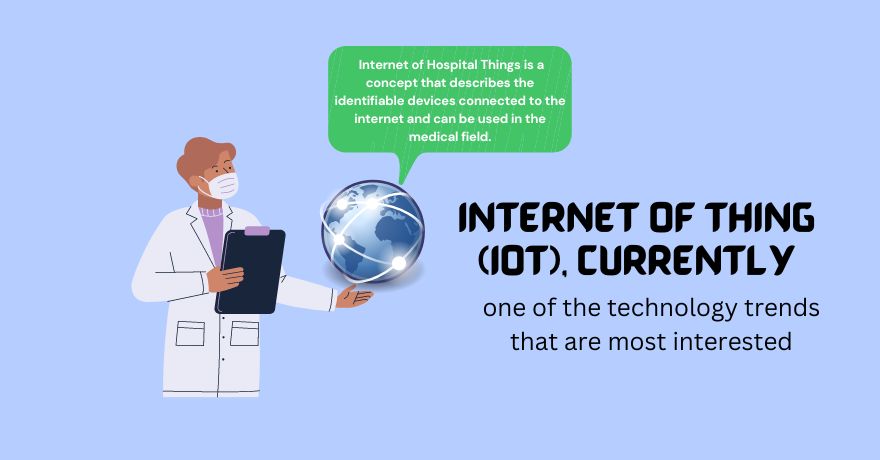The Internet of Healthcare Things (IoHT)
Will Pose New Data Pressures for Providers The Internet of Healthcare Things (IoHT) consists of an increasingly vast array of Web-enabled devices, including wearables, implants, ingestible sensors, smartphone apps and home monitoring systems. As the technology matures, IoHT devices will facilitate a transformation in care by enabling constant monitoring of a patient, automating communications with clinicians and averting health episodes. According to a Goldman Sachs report, IoHT could save the industry more than $300 billion by improving chronic disease management. However, several challenges need to be addressed by the industry before IoHT can meet its full potential.
The sheer amount of patient
Generated health data could be overwhelming for providers if steps are not taken to evaluate what kind of data is included in patient records and how providers should use the data. Network infrastructure will also need to be improved and expanded to accommodate demand. With an abundance of devices on the market, these technologies should be able to communicate with each other safely and effectively. New standards will need to be established to ensure interoperability. The growth of the IoHT also opens doors for malicious activity, so these devices will require strong authentication features and secure communication channels. Finally, to make use of the influx of data, providers should develop competencies in big data analytics and invest in an information technology infrastructure.
What will health care look like in 2025?
Picture this: moment by moment, an abundant network of apps, sensors and devices produces patient-generated health data (PGHD) are helping providers to better manage chronic diseases, adjust treatment plans and keep patients healthy.
Patients, no longer reliant on visiting a “brick and mortar” health facility, are monitored and treated virtually in their homes, while feedback from their PGHD inspires them to adopt healthier habits and become active partners in their care. Advanced, real-time analytics give providers continuous knowledge to improve patient outcomes, clinical protocols and population health.
It’s a picture we’re swiftly catapulting toward.
Accelerating the blazing speed of change is the Internet of Things (IoT), or in healthcare, the Internet of Healthcare Things (IoHT)—the vast world of Web-enabled devices and the people connected to them. From wearables and implantables to ingestible sensors, smartphone apps to home monitoring systems, the IoHT facilitates data gathering, analysis and sharing, creating an intricately connected health care cosmos, one that’s ready to revolutionize patient care.
IoHT devices facilitate care transformation by enabling constant monitoring of patient conditions, automating communications with clinicians and averting impending health episodes. In enabling earlier intervention before a condition becomes more serious and reducing the need for emergency hospitalization, these devices also have the potential to lower costs dramatically. A Goldman Sachs report estimates that the IoHT can save the industry more than $300 billion, mainly by enabling improvements in chronic disease management.
Smartphones have largely eliminated
The gap between the haves and have-nots, and have provided a means of almost-continuous interaction with individuals through their phones. An estimated 92% of adults in the United States own a mobile phone of some kind, while 19% of smartphone owners have at least one health app on their phone. Also, the price of sensors, processing power and bandwidth has dropped precipitously, which has rapidly driven new technology adoption.
Protecting privacy and security.
For cybercriminals, the IoHT opens more doors for malicious activity. Collecting and connecting voluminous amounts of protected health information takes privacy and security imperatives to new heights.
A strong security strategy includes authentication technologies and processes to verify patient and provider identities for access by authorized users only. Communication channels among devices in the IoHT must also be secure to maintain information integrity.
Gaining insights from analytics. Many healthcare organizations have focused on capturing data, but not on mining it to improve patient and population health. Without targeted analysis, data “noise” gets louder while its “signals” grow fainter. To make use of all the data streaming in from various sources, providers will need to develop new competencies in big data analytics that bring actionable insights to the point of care. They will need to build, buy or outsource an information technology infrastructure that supports advanced analytics across all care settings.
The IoHT is rapidly coming of age.
This colossal network of linked devices continuously collecting. Sending and receiving data throughout the healthcare universe—will ring in a new era of connected health. Patient-centric care delivery and data-driven health decisions.
For those who can build the coming change into the foundation of their business today, opportunities are limitless.
http://www.healthdatamanagement.com/opinion/how-the-internet-of-things-will-pose-new-data-pressures-for-providers?brief=00000152-14b1-d1cc-a5fa-7cfbce8c0000




